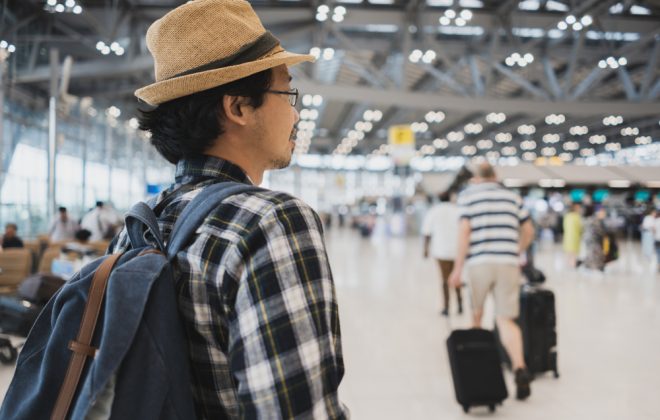Key Chinese holidays Part 2: Travel Modes and Behaviors

In the previous article, we discussed why European businesses need to be aware of key Chinese holidays to attract more Chinese FITs. In this article we will discuss the travel modes and behaviors and how these changes are relative to you. Travel modes and behaviors differ accordingly to the holiday period when Chinese tourists go abroad. Here are a few considerations and tips to help your business to attract more authentic Chinese FITs are here:
The Choice of Destination
Destination choice is largely determined by the local climate. Both warm and tropical spots are desired on the cold days of the Chinese New Year, while colder climates are desired during the summer. Understanding Chinese tourists’ mindset on weather can help to predict if they will visit your area. It will also help to predict what types of activities Chinese tourists will perform, such as camping, hiking, going to the beach, or other family-oriented activities during the Chinese New Year. Another interesting point about destination picking is that more and more Chinese tourists prefer traveling to further destinations than previously with a 25% increase in outbound Chinese tourists for Europe in 2017 and an estimated 80% of tourists preferring to visit more than one city and 93% preferring not to return to previously visited locations during their trip.
Type of Trip
With the internet-savvy generation of Chinese FITs increasing, the demand for bundled experiences and culturally immersive travel has become the main driver for going abroad. Themed travel has gained more popularity with a 33% forecast of Chinese FITs using themed tours during their travels, an 18%increase from 2016. Other types of trips that are growing include ecological tours, backpacking,and private luxury tours with 28%, 26%, and 23% of FITs respectively.
Length of Trip
Recent statistics from the CITM 2017 report indicates that all age groups of Chinese FITs are embarking on longer trips than before.Shorter trips have become less popular and the report also forecasts that travelers will continue to follow this trend in the future, so itinerary inspiration are important for pre-trip.
The main travel periods for long-haul trips happen during the seven-day holidays of Chinese New Year and National Day, as well as the summer season, when the whole family will be on vacation. These periods of travel will be the most lucrative periods as family travelers usually have a diverse range of needs based on age group and are willing to spend more to accommodate each family member’s needs. The duration of the trip will also affect the number of destinations visited and activities done. This provides more regional or off-the-map locations with more opportunities to host more Chinese travelers.
Traveling Companions
Chinese New Year focuses on the theme of family and unity. Accordingly, during this time of year numerous extended families and relatives go traveling together. This means that businesses must be ready to offer more diverse types of services that are relevant to each age group. Furthermore, in the summer months parents bring their children on their travels in peak times, while retirees usually travel during the off-season when traveling is less costly. On the other hand it is harder to estimate when high-net-worth Chinese FITs go abroad, as they do not follow a fixed schedule for traveling.
Preparation Periods & Bookings
Based on the statistics from a tourism industry report, many Chinese tourists use 2 to 4 months to start planning their trips. Unexpectedly, there is not much difference in the time needed to plan and book long-haul trips versus doing so for short-haul trips. Locations with more rigorous visa regulations and lesser-known destinations will undoubtedly see longer planning periods, while the opposite is true for closer destinations with easier visa regulations. It is also important to note that marketing activities have a higher correlation with how trips are planned and booked.
start marketing as early as 3 to 6 months in advance as over 90% of travel plans for Chinese tourists usually take 30 to 60 days in advance.
Advertising & Promotion
Finding the appropriate time to do marketing and promotional activities can truly impact your business’s success. If you are a business owner in a travel desired location, you should start marketing as early as 3 to 6 months in advance as over 90% of travel plans for Chinese tourists usually take 30 to 60 days in advance. If you can offer local services such as car rental or accommodation, 1 to 2 months will be sufficient enough to appeal to the customers.
Chinese tourists are very digitally immersed. Social media channels are a must for engaging potential customers with social media platforms like Wechat, Weibo, Douyin, and Kuaishou as well as Facebook, Instagram, Snapchat, and Twitter. Interacting and offering promotions such as giving red packets (a small packet with money as a sign good wishes and luck) or discount coupons will help your business to attract more traffic, engagement, and followers. Holding red packet giveaways during the Chinese New Year may be a good way to indicate that you care about Chinese tourists and will leave a deep impression in their minds. Alternatively, informing that there are convenient payment options such as UnionPayor AliPay would attract more Chinese tourists as it is their preferred payment option.



